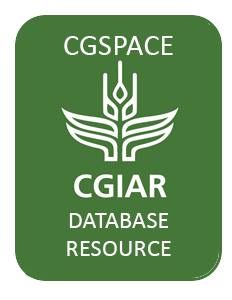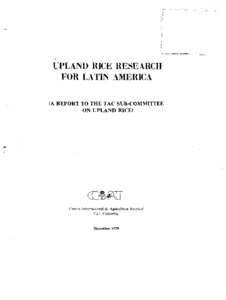Mission
To reduce hunger and poverty, and improve human nutrition in the tropics through research aimed at increasing the eco-efficiency of agriculture.
People
CIAT’s staff includes about 200 scientists. Supported by a wide array of donors, the Center collaborates with hundreds of partners to conduct high-quality research and translate the results into development impact. A Board of Trustees provides oversight of CIAT’s research and financial management.
Values
- Shared organizational ethic
- We respect each other, our partners, and the people who benefit from our work. We act with honesty, integrity, transparency, and environmental responsibility in all of our joint endeavors.
- Learning through partnerships
- We work efficiently and pragmatically together and with partners. Considering our diversity to be a key asset, we adapt readily to change and strive to improve our performance through continuous learning.
- Innovation for impact
- We develop innovative solutions to important challenges in tropical agriculture, resulting in major benefits for the people who support, participate in, and profit from our work.
Members:
Resources
Displaying 901 - 905 of 958Bean program 1978 report
Emphasis has been placed on the screening of hybrid selections for resistance to rust, anthracnose, BCMV and Empoasca sp., yield and sensitivity to photoperiod. A total of 1464 materials (937 selections from the breeding program) were screened in the Bean Team Nursery and 700 (200 breeding selections) in the Preliminary Yield Trial. Results from the latter demonstrated major gains in yield among colored materials and a very high proportion of lines resistant to BCMV. Many lines demonstrated multiple-disease resistance.
La yuca como cultivo principal de un sistema de cultivo multiple
Multiple cropping, sequential cropping, intercropping, mixed intercropping, intercropping in rows, in strips, relayed intercropping, cropping patterns, monoculture, crop rotation and land equivalent ratio are defined. The characteristics of multiple cropping and intercropping with beans are discussed; for the latter problems of competence are discussed (light, CO2, water and nutrients). Some cultural practices are recommended for cassava/bean intercropping: soil and fertilization type, water availability, propagation material, and weed, pest and disease control.
Control cultural de las malezas en yuca
Some cultural control measures of weeds in cassava are discussed: quality of the material, planting system and density, density x plant type interaction and use of mulching. In order to study the interaction plant type x planting density, var. M Mex 59 (vigorous) and M Col 22 (nonvigorous) were planted in plots of 7500 and 15,000 plants/ha; and 3 levels of weed control were established: complete, intermediate and no control. The vigorous var.
Pasture research and technology transfer in two Latin American cattle development programs: Ecuador and Panama
Se presentan resultados de la investigacion en produccion y utilizacion de pastos y forrajes que indican que en condiciones relativamente buenas de fertilidad natural y de retencion de humedad de los suelos, representadas por la region del litoral ecuatoriano entre Quevedo y Santo Domingo, es posible obtener aumentos de peso diario en novillos de engorde del orden de 450 g/animal y, con cargas de hasta 3 animales, lograr producciones promedio de carne de hasta 1,5 kg/ha/dia, o sea mas de 500 kg/ha/ano, de modo que los animales alcanzan el peso de mercado antes de los 2,5 anos de edad; tambi



